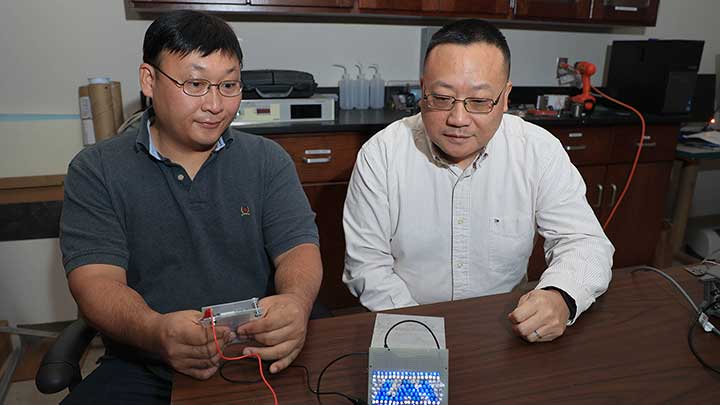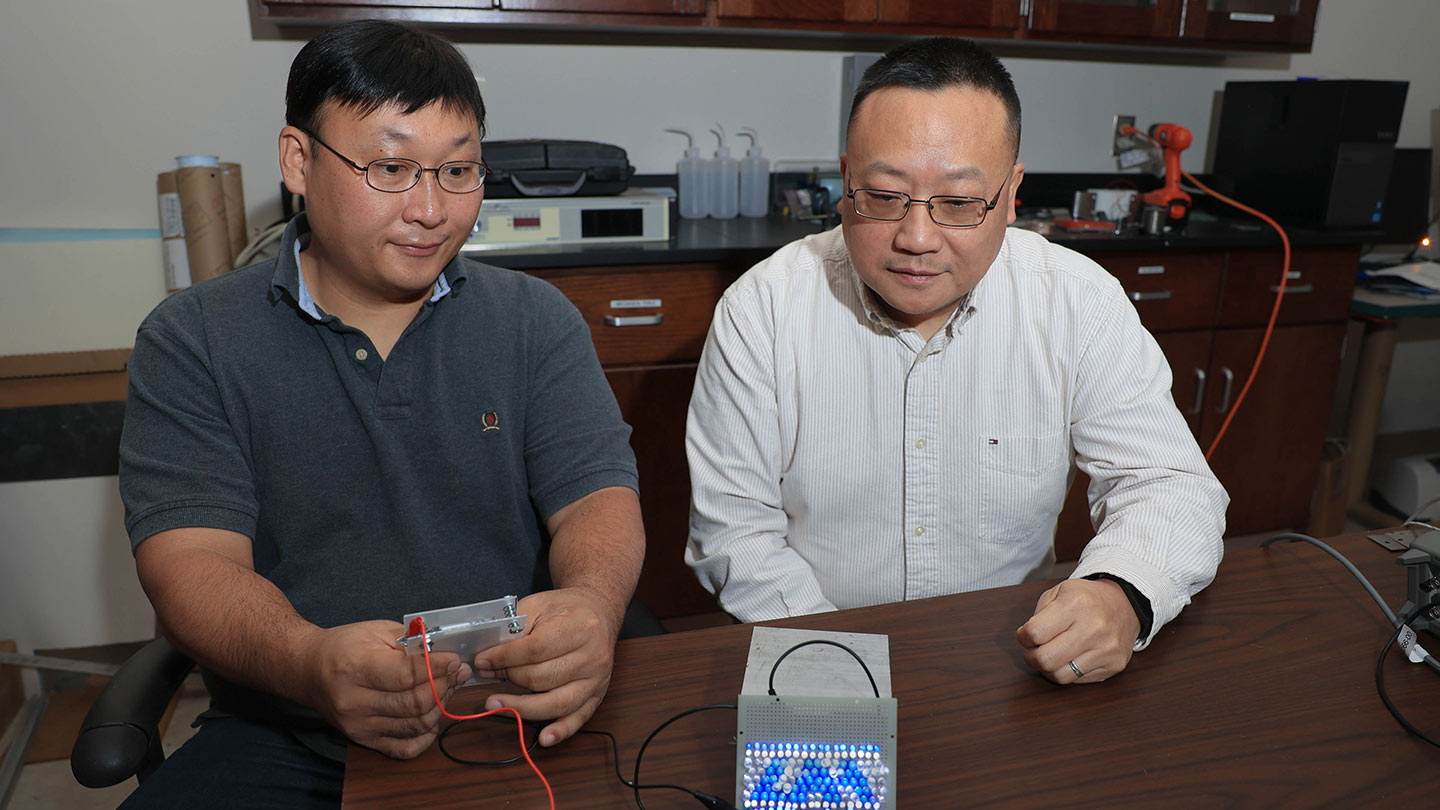
UAH – News

Dr. Moonhyung Jang, remaining, operates the generator to gentle an LED show as Dr. Gang Wang appears to be like on in the Adaptive Constructions Laboratory.
Michael Mercier / UAH
A little bit of laboratory serendipity led University of Alabama in Huntsville (UAH) scientists to a easy mechanical way to deliver electricity to work electronic units, says a paper they have printed.
Triboelectric nanogenerators use many levels of unique supplies to produce electricity when pressed. Although screening a triboelectric nanogenerator in the Adaptive Structures Laboratory of Dr. Gang Wang at UAH, a element of the College of Alabama Technique, postdoctoral exploration assistant Dr. Moonhyung Jang noticed anything strange.
“During a finger-tapping check performed by Dr. Jang, a Scotch tape was introduced on the top to prevent electric powered shock,” says Dr. Wang, an affiliate professor of mechanical and aerospace engineering and the project’s principal investigator.
“An surprising large voltage was noticed. Right after a mindful investigation, we figured out that the tape layer is the rationale to lead to this,” Dr. Wang claims. “This led to our creation that introduces tacky elements to increase the general performance of triboelectric generators.”
Consisting of a metalized polyester sheet that’s related to shiny gift-wrap plastic substance and a double-sided tape with an acrylic adhesive layer, the configuration is both very simple and cost effective.
“A contact-and-separation motion is demanded for the present-day triboelectric generator style,” claims Dr. Jang, who is the paper’s lead writer. “In our new paper, we demonstrated vitality harvesting when another person is strolling by making use of a shoe integrated with the recent triboelectric generator. We can modify the style and design to fulfill other programs accordingly.”
Supported by Components Sciences LLC via a U.S. Army Small Company Innovation Exploration (SBIR) stage 2 method, the purpose of the venture is to offer an electricity harvesting resolution that will ability sensors and electronics to monitor flight occasions of aviation and missile buildings. In the section I exertion, Dr. Wang and his staff efficiently shown the galloping electricity harvesting strategy employing piezoelectric components.
Dr. Jang joined the team to support the SBIR stage 2 plan on June 1, 2021. Alumnus Jacob Lee of Toney (B.S., Aerospace Engineering, Could 2022) is a paper co-author. Lee is now an engineer at the U.S. Military House and Missile Protection Command.
“We are grateful, as properly, for the complex direction from Dr. Simon Chung, vice president of exploration and advancement at Materials Sciences LLC,” Dr. Wang states. Dr. Chung is also a paper co-author.
“A very simple strategy was to try a triboelectric nanogenerator structure by modifying the surface area structure of a triboelectric layer applying the atomic layer deposition approach,” says Dr. Wang. “This is why we invited Dr. Yu Lei to support us make these kinds of prototype in his lab by developing oxidized layers.”
Dr. Lei is the interim chair and an affiliate professor in the Office of Chemical and Material Engineering, and it was that prototype that Dr. Jang was tests when the unusual readings had been recognized.
“Moreover, Dr. Lei also contributed to our present-day paper and presented plenty of ideas and responses from a product scientist’s viewpoint,” claims Dr. Wang.
The investigators are exploring diverse ideas to improve the device’s general performance. The scientists made use of an LED display to illustrate the thought, but they say it has substantially wider potential apps.
“The best aim is to offer a electrical power resource for sensor and checking techniques in various engineering programs,” suggests Dr. Jang. “We now done some tests to exhibit a wearable sensor concept for the human physique.”
